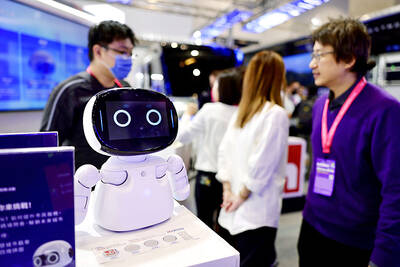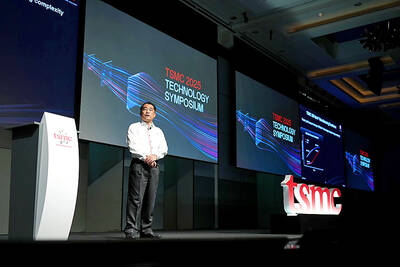Japan's food commission declared beef from young American cattle safe yesterday, paving the way for the government to ease a two-year import ban and resolve a bitter trade tiff with its top ally.
The Food Safety Commission voted unanimously to send the report to the health and agriculture ministries, which will study it and make a final recommendation to the government. Media reports say the ban could be eased as soon as next Monday.
A resumption of imports -- to be limited to meat from cows younger than 21 months -- would defuse a dispute that has nagged the two allies since Japan closed its doors to American beef in December 2003 after the first US case of mad cow disease.
Commission members, however, said that the safety of American beef would depend on US inspectors following strict guidelines, such as removing dangerous cow material such as brains and spinal cords from the meat.
"Much of it is dependent on a promise between two countries," Commission Chairman Masaaki Terada said.
The report also found beef from younger Canadian cows safe.
Both the Asahi and Nikkei newspapers said on Wednesday that US beef could reach Japanese consumers before the year's end if the ban is speedily removed.
Prior to the ban, Japan was the most lucrative overseas market for US beef, buying US$1.4 billion worth in 2003. Cheap, tasty US beef had been popular in low-cost beef-and-rice restaurants.
The food commission's deliberations have been painstaking. After a commission internal panel concluded that US beef from younger cows posed no significant danger, the commission held a series of public meetings on the report.
Yasuhiro Yoshikawa, head of a commission panel working on the mad-cow issue, said that more than 50 percent of the comments collected in the hearings were against resumption of imports. Still, he defended the commission's findings.
"The issues raised in the public hearings were all adequately debated within the prion research committee," he said. "I believe that as specialists, we took enough time to analyze these issues."
The move comes after a series of US officials -- including Secretary of State Condoleezza Rice -- expressed growing impatience with the slow progress resolving the dispute. The issue came up when President George W. Bush visited Japan last month.
A group of 21 US senators introduced legislation on Oct. 26 that would force Bush to impose tariffs on Japan if it does not lift the ban.
But even if the ban is eased, it is uncertain when finicky Japanese consumers will be ready to dig into US steaks.
A survey this week by Kyodo News agency showed some 75 percent of respondents said they would be unwilling to eat US beef because of mad-cow fears, compared to 21.2 percent who said they would consume it.
Eating beef from cattle infected with mad cow disease, or bovine spongiform encephalopathy, can cause a fatal brain disorder in humans.

DEMOGRAPHICS: Robotics is the most promising answer to looming labor woes, the long-term care system and national contingency response, an official said Taiwan is to launch a five-year plan to boost the robotics industry in a bid to address labor shortages stemming from a declining and aging population, the Executive Yuan said yesterday. The government approved the initiative, dubbed the Smart Robotics Industry Promotion Plan, via executive order, senior officials told a post-Cabinet meeting news conference in Taipei. Taiwan’s population decline would strain the economy and the nation’s ability to care for vulnerable and elderly people, said Peter Hong (洪樂文), who heads the National Science and Technology Council’s (NSTC) Department of Engineering and Technologies. Projections show that the proportion of Taiwanese 65 or older would

Nvidia Corp yesterday unveiled its new high-speed interconnect technology, NVLink Fusion, with Taiwanese application-specific IC (ASIC) designers Alchip Technologies Ltd (世芯) and MediaTek Inc (聯發科) among the first to adopt the technology to help build semi-custom artificial intelligence (AI) infrastructure for hyperscalers. Nvidia has opened its technology to outside users, as hyperscalers and cloud service providers are building their own cost-effective AI chips, or accelerators, used in AI servers by leveraging ASIC firms’ designing capabilities to reduce their dependence on Nvidia. Previously, NVLink technology was only available for Nvidia’s own AI platform. “NVLink Fusion opens Nvidia’s AI platform and rich ecosystem for

Taiwan Semiconductor Manufacturing Co (TSMC, 台積電) yesterday said it is building nine new advanced wafer manufacturing and packaging factories this year, accelerating its expansion amid strong demand for high-performance computing (HPC) and artificial intelligence (AI) applications. The chipmaker built on average five factories per year from 2021 to last year and three from 2017 to 2020, TSMC vice president of advanced technology and mask engineering T.S. Chang (張宗生) said at the company’s annual technology symposium in Hsinchu City. “We are quickening our pace even faster in 2025. We plan to build nine new factories, including eight wafer fabrication plants and one advanced

‘WORLD’S LOSS’: Taiwan’s exclusion robs the world of the benefits it could get from one of the foremost practitioners of disease prevention and public health, Minister Chiu said Taiwan should be allowed to join the World Health Assembly (WHA) as an irreplaceable contributor to global health and disease prevention efforts, Minister of Foreign Affairs Lin Chia-lung (林佳龍) said yesterday. He made the comment at a news conference in Taipei, hours before a Taiwanese delegation was to depart for Geneva, Switzerland, seeking to meet with foreign representatives for a bilateral meeting on the sidelines of the WHA, the WHO’s annual decisionmaking meeting, which would be held from Monday next week to May 27. As of yesterday, Taiwan had yet to receive an invitation. Taiwan has much to offer to the international community’s